Hello, Arkansas Gardeners! You don’t need to pamper fussy plants to enjoy a gorgeous yard in the Natural State.
From the sticky-sweet Delta air to the breezy plateaus of the Ozarks, these iron-clad perennials roll with our unpredictable weather and still look like a million bucks.
Below you’ll find 18 Arkansas-tough perennials that thrive on benign neglect. They survive heat waves, surprise cold snaps, sketchy clay soil, and the odd drought without blinking.
1. Autumn Sage (Salvia greggii)
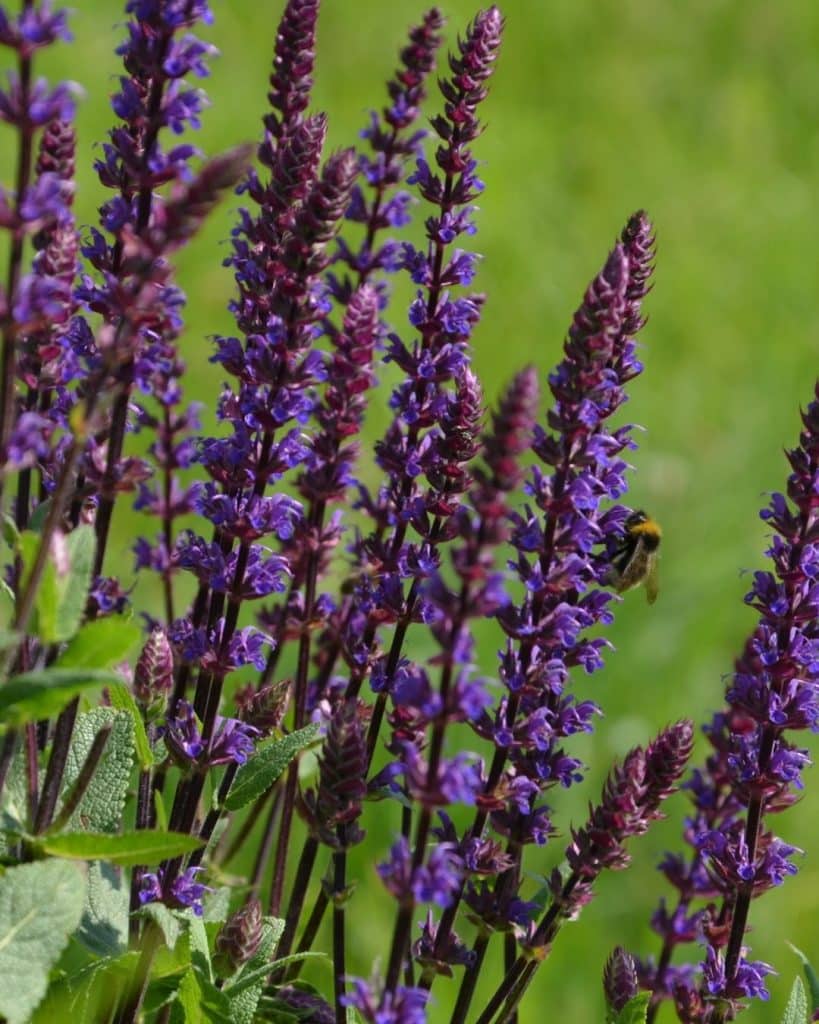
- Best in south-central Arkansas (zones 7–8)
- Blooms nonstop from spring to frost in reds, pinks, and corals
- Hummingbird favorite that shrugs off drought
Plant Autumn Sage in a sunny spot with decent drainage, then basically forget it.
Deep roots let it power through summer with minimal irrigation, while aromatic foliage keeps deer at bay.
Pinch after the first big bloom to encourage a second floral burst, or let it grow naturally into a loose, rounded mound that’s always buzzing with pollinators.
2. Lanceleaf Coreopsis (Coreopsis lanceolata)
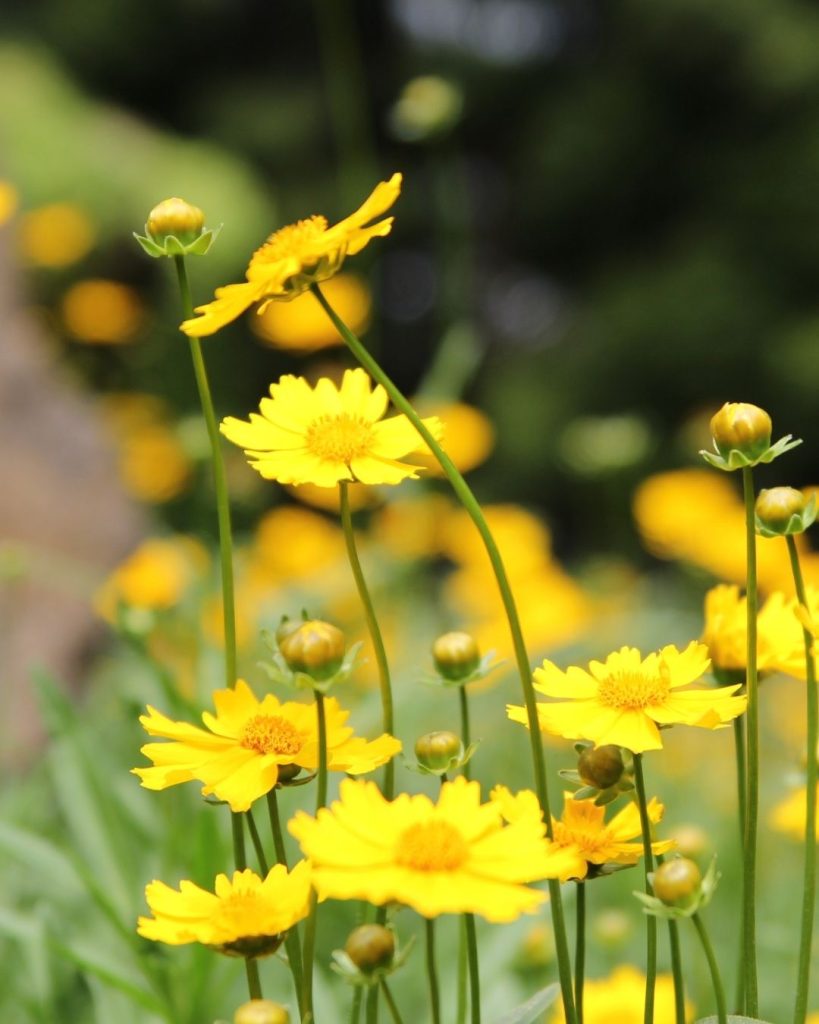
- Native statewide on sunny roadsides
- Golden daisies bloom from May through July
- Tolerates poor, sandy, or rocky soil
This prairie staple self-seeds just enough to create cheerful drifts without turning invasive.
Cut plants back by half after the first flush to spark a late-summer encore and keep paths tidy.
The finely textured foliage stays neat even when blooms pause, so you never feel pressured to yank it out and replant.
3. Turk’s Cap (Malvaviscus arboreus var. drummondii)
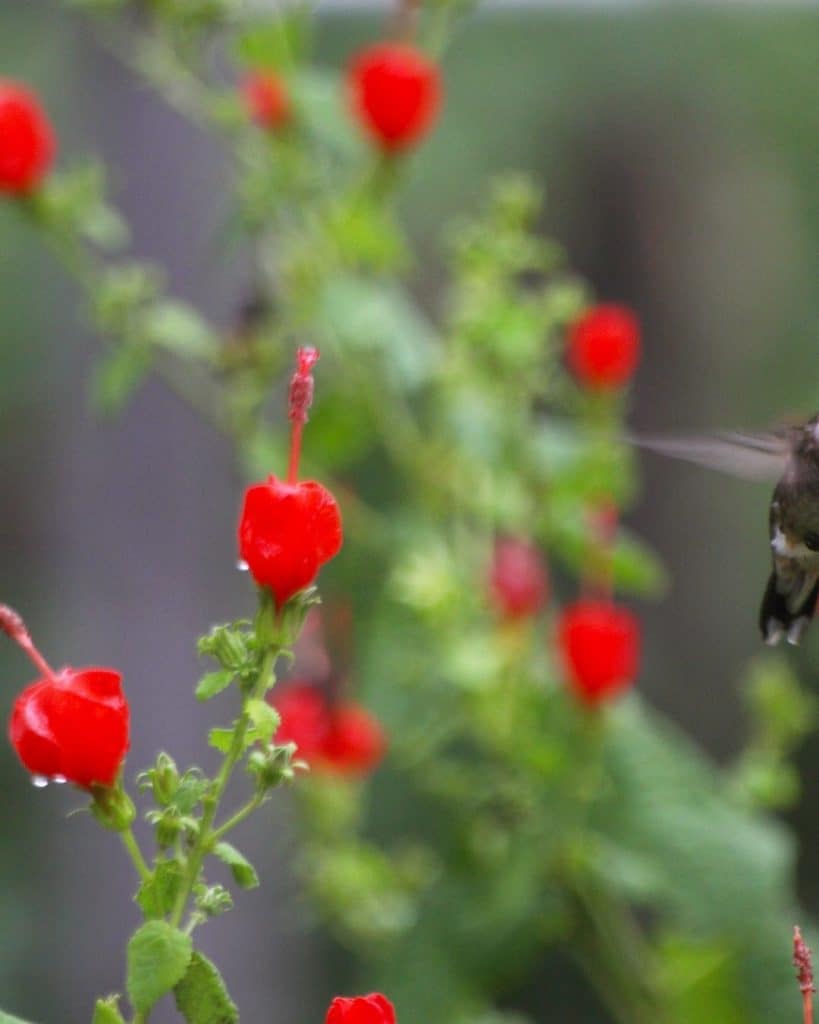
- Thrives in shade or part shade
- Bright red, hibiscus-like flowers loved by hummingbirds
- Handles heat, humidity, and heavy soils
If you have a gloomy corner where grass fizzles, fill it with Turk’s Cap.
The blossoms never fully open; instead. They’re the perfect sipping stations for ruby-throats.
Plants die back after frost, but a quick winter haircut lets new stems rocket skyward each spring, often topping 4 feet by July.
4. Purple Coneflower (Echinacea purpurea)
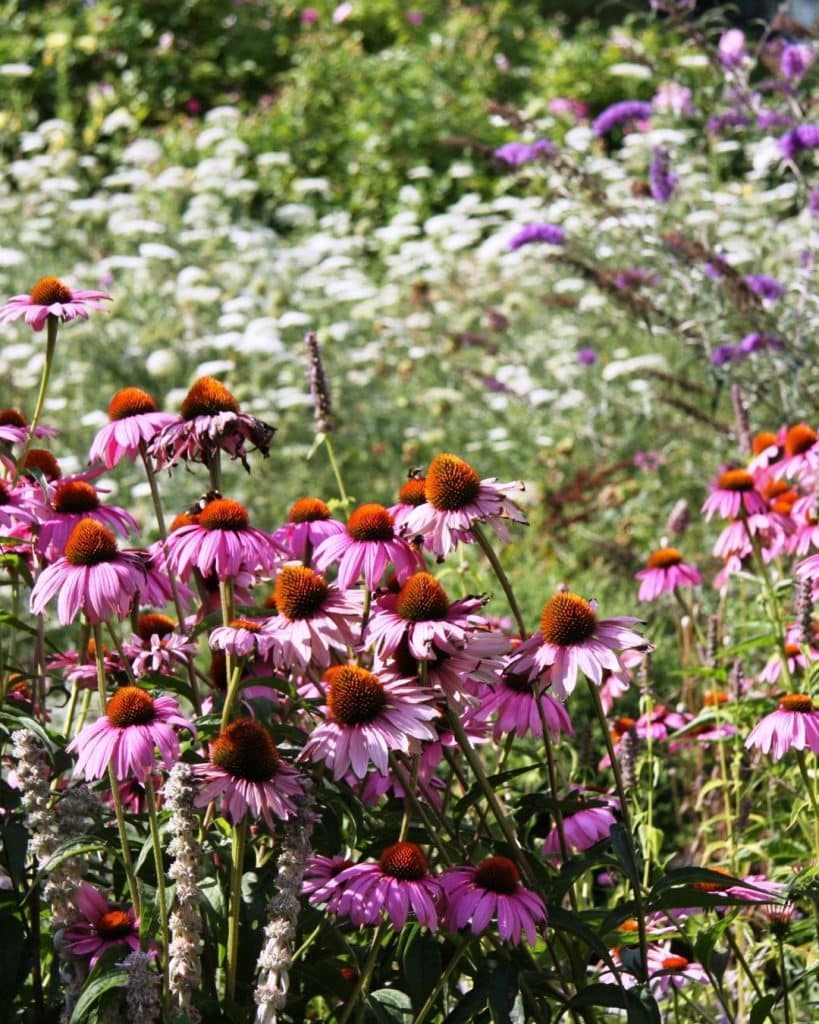
- An Arkansas native found in open woods and prairies
- Pink-purple petals around a bold orange cone
- Seeds feed goldfinches through winter
Plant coneflower once and watch the clump bulk up for decades. Deep taproots anchor the plant during drought, while stiff stems dodge summer storms.
Resist the urge to deadhead every bloom. Fading cones add a sculptural vibe and provide priceless winter birdseed.
5. Pink Muhly Grass (Muhlenbergia capillaris)
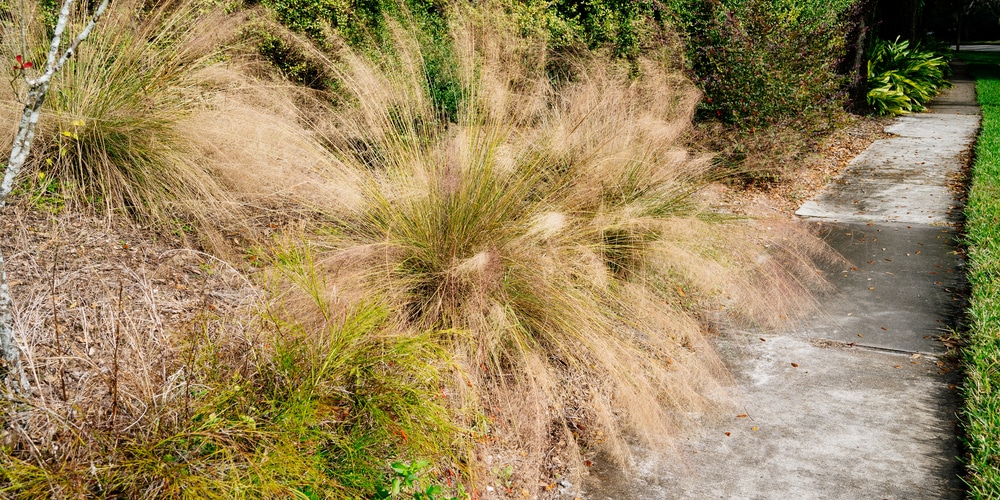
- Turns into pink fog every October
- Grows in sun or light shade
- Laughs at drought once rooted
Space plants 30 inches apart, and they’ll knit into a billowy hedge that glows at sunset.
Winter burn adds tawny texture. Don’t cut it back until late February so birds can forage on seeds.
A single deep watering every couple of weeks during establishment is all the pampering it needs.
6. Little Bluestem (Schizachyrium scoparium)
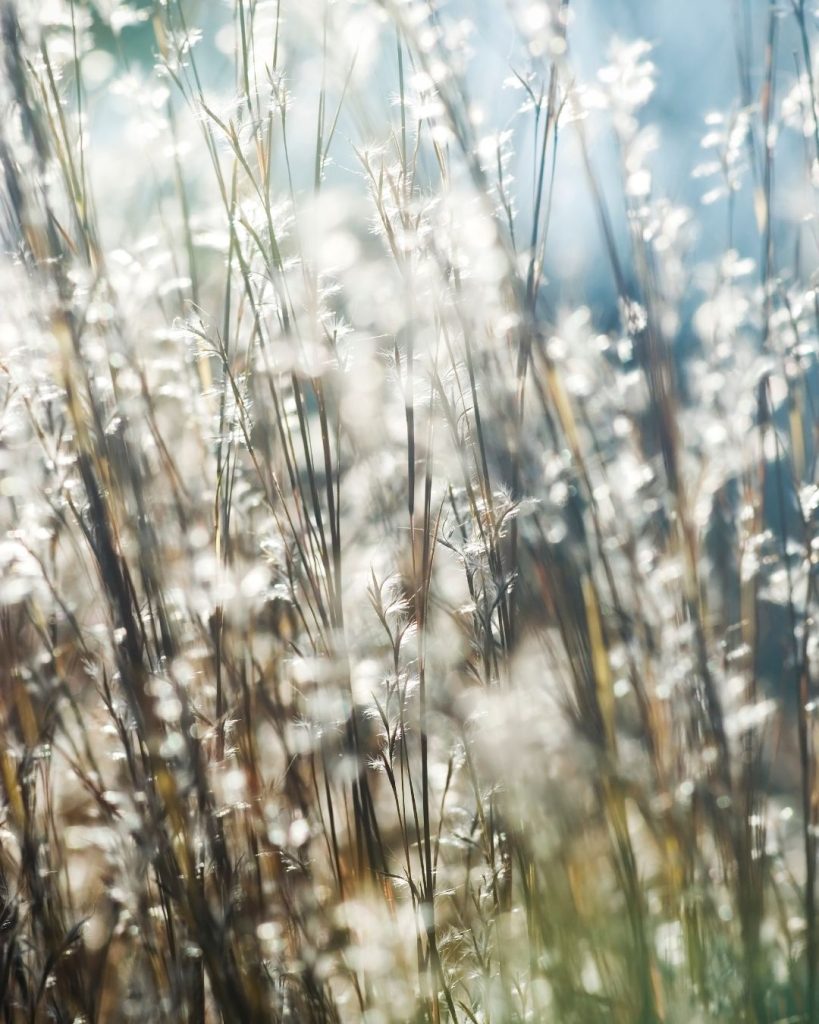
- Statewide prairie native
- Blue-green blades turn copper-orange in fall
- Thrives in hot, dry, rocky soils
The tidy clumps reach knee-high, making them perfect midsized accents.
Leave stems standing through winter to protect songbirds from predators, then shear to 4 inches before new shoots emerge.
For electric fall color, plant the cultivar ‘The Blues’ or the compact ‘Standing Ovation.’ (The Blues is the pictured plant)
7. Blanket Flower (Gaillardia pulchella)
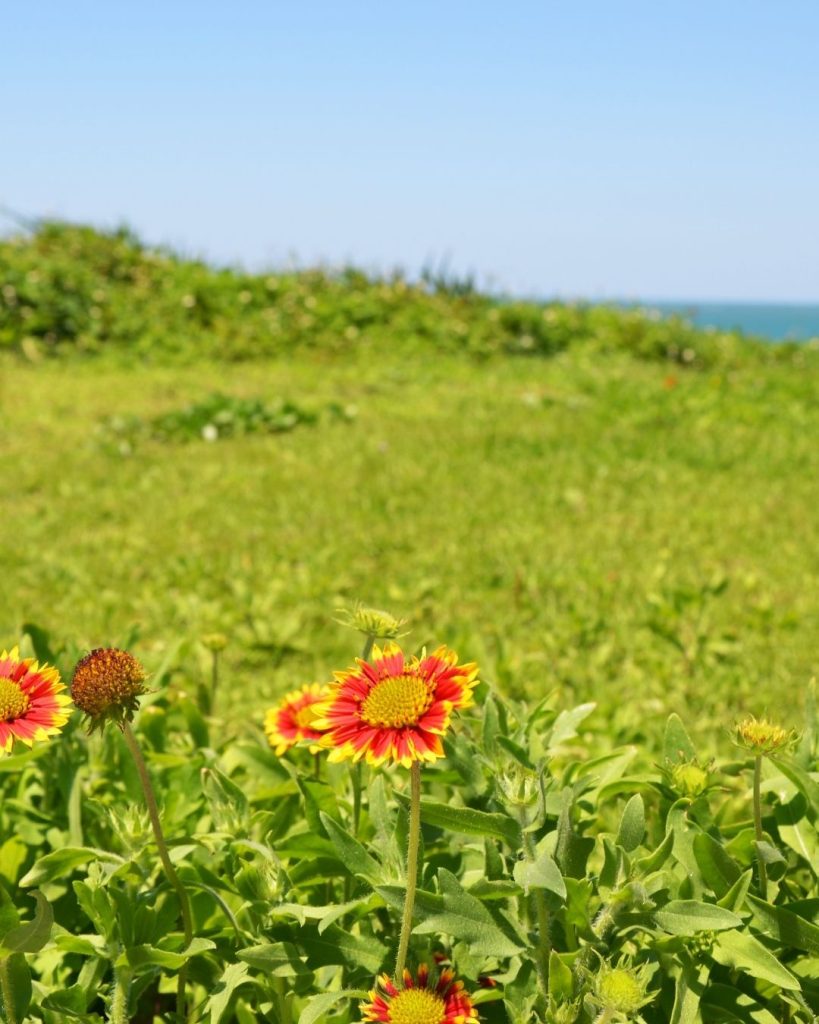
- Fiery red-and-gold blooms all summer
- Handles sand, gravel, and heat
- Self-seeds for free plants
Blanket Flower’s taproot lets it thrive where irrigation hoses can’t reach.
Mix it with purple Salvia for a blaze-of-glory combo that looks intentional even in roadside beds.
The blossoms make excellent cut flowers. Snip a few and they’ll last nearly a week in a vase.
8. Coral Honeysuckle (Lonicera sempervirens)
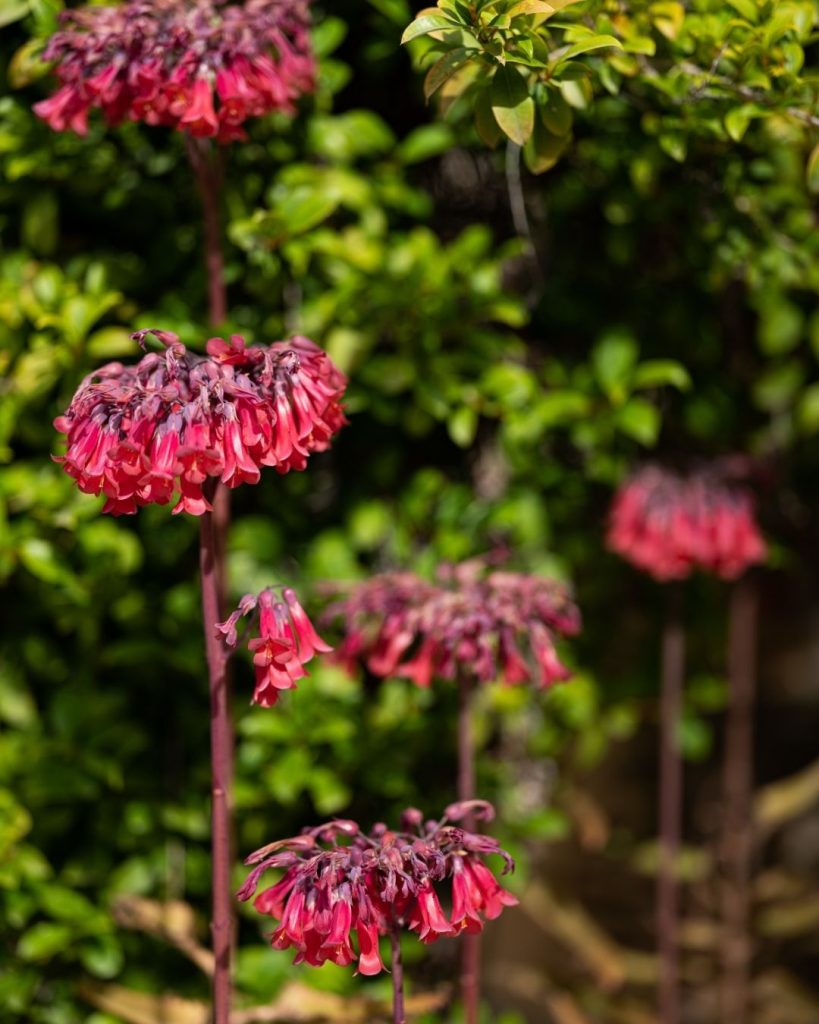
- Non-invasive native vine
- Trumpet-shaped coral blooms from spring to fall
- Irresistible to hummingbirds
Thread stems through an arbor, then step back.
Unlike Japanese honeysuckle, this native doesn’t strangle trees.
A mid-summer trim keeps growth in check if it starts shading windows.
9. Winecup (Callirhoe involucrata)
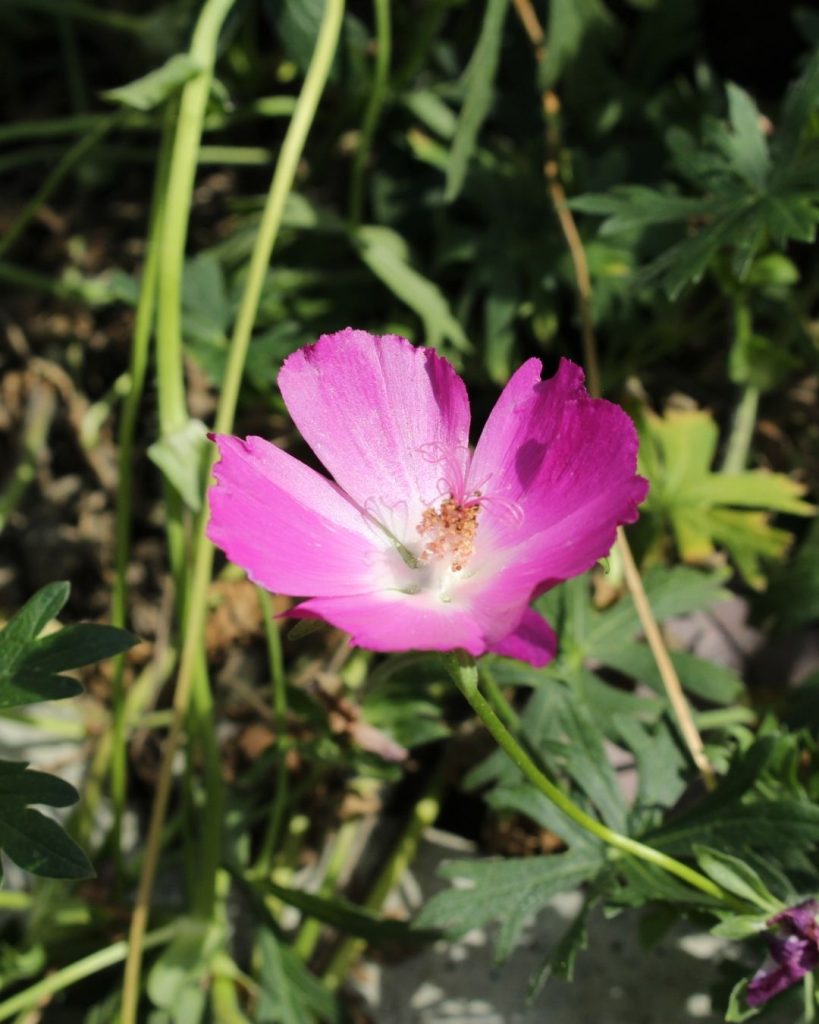
- Low, trailing groundcover
- Magenta cup-shaped blooms open each morning
- No fuss in sun and poor soil
Winecup spreads about two feet a year. Tuck it between stepping stones or let it cascade from raised beds.
Blooms close by late afternoon, so morning light is prime viewing time.
A light shear after the first flush encourages fresh foliage and a bonus bloom in early fall.
10. Butterfly Weed (Asclepias tuberosa)
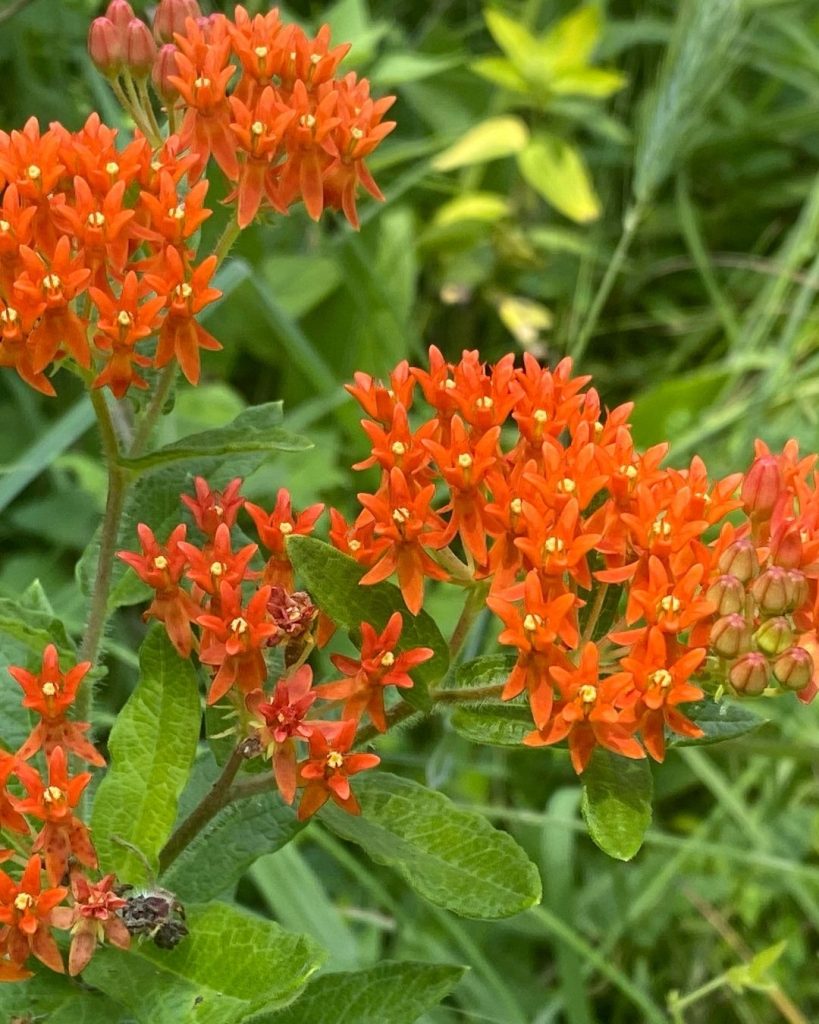
- Host plant for monarch caterpillars
- Bright orange umbels in early summer
- Tolerates drought and thin soils
Choose a permanent spot. Its long taproot hates transplanting.
Avoid mulch piles that keep crowns wet, and you’ll enjoy decades of blooms plus plenty of caterpillar action come July.
11. Blue Mistflower (Conoclinium coelestinum)
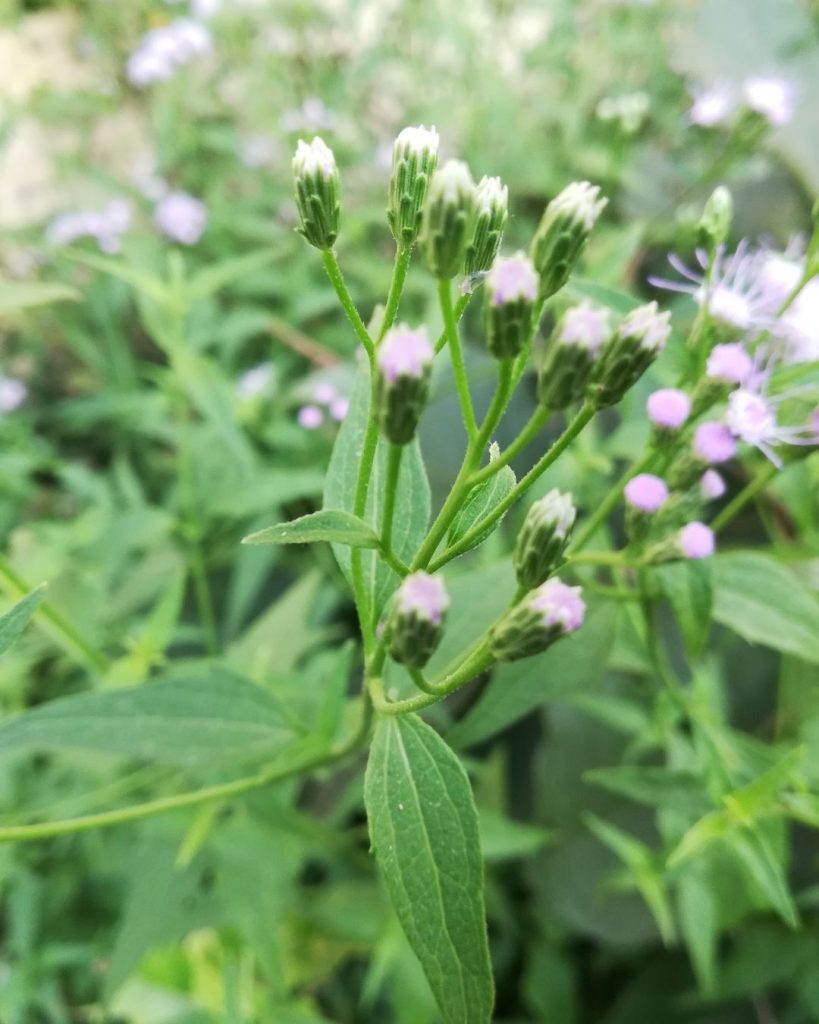
- Soft lavender-blue clouds of bloom
- Peak nectar source for fall monarchs
- Spreads gently in moist or average soil
Blue Mistflower will spread by rhizomes, but pulls up easily if it wanders.
Pair it with late-blooming asters for a pollinator buffet when most other flowers have fizzled.
12. Gaura (Gaura lindheimeri)
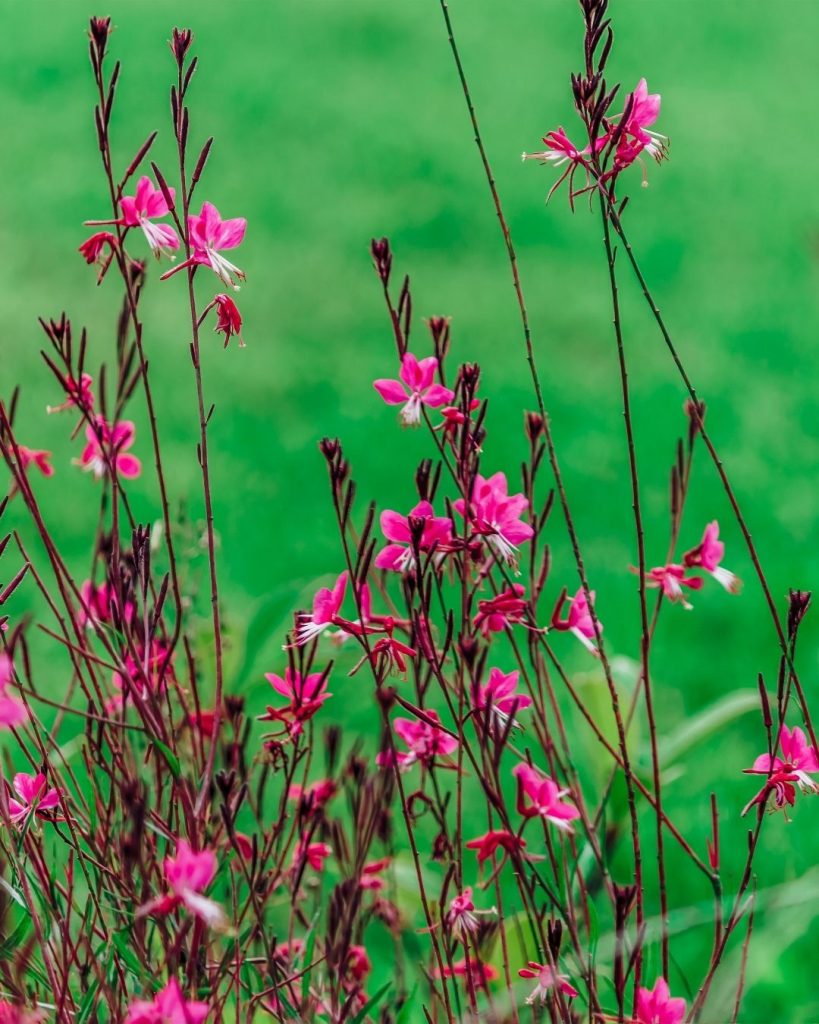
- Airy wands of pink or white “butterflies”
- Blooms for months with no fertilizer
- Handles heat, humidity, and drought
Gaura prefers lean soil, rich compost makes it floppy. If stems sprawl, shear by one-third; within two weeks the plant will be upright and in bloom again.
It’s a staple in low-maintenance cottage borders for good reason.
13. Blue False Indigo (Baptisia australis)
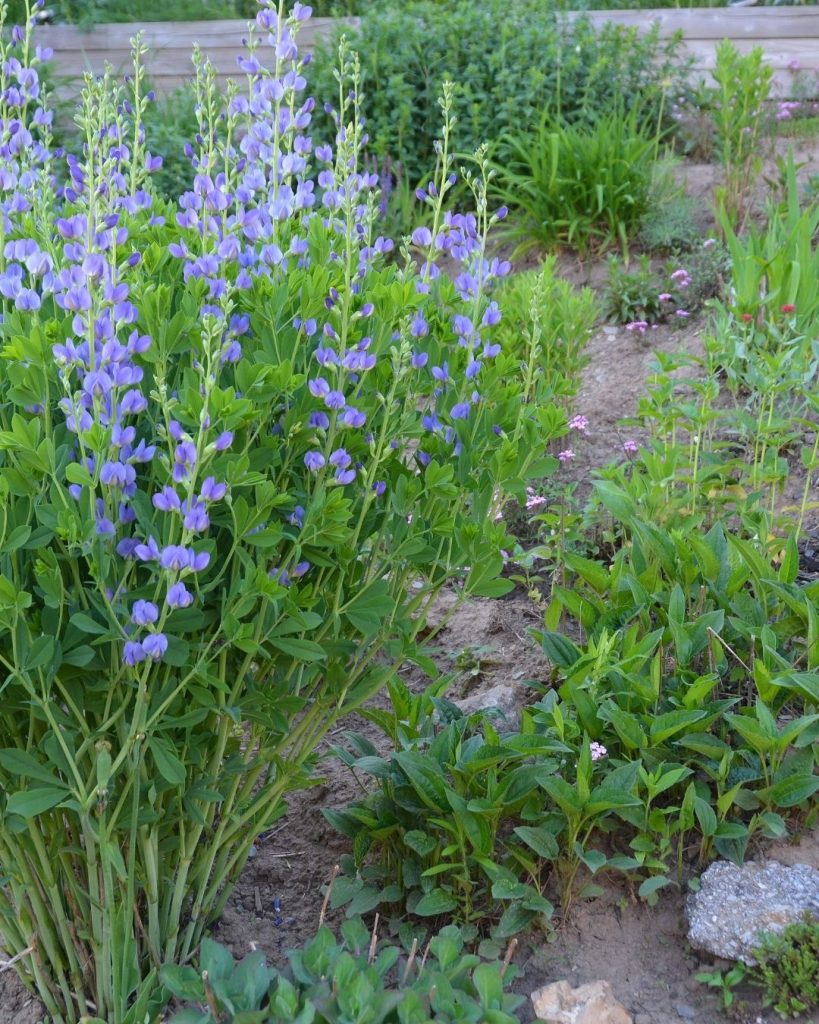
- Clump-forming legume with cobalt flower spikes
- No pests, no diseases, no care
- Black seedpods add winter interest
After blooming, Baptisia’s blue-green foliage acts like a small shrub, filling gaps between roses or hydrangeas.
Leave pods in place for December bouquets, or cut them before they rattle if you’d rather not have volunteers.
14. Scarlet Rose Mallow (Hibiscus coccineus)
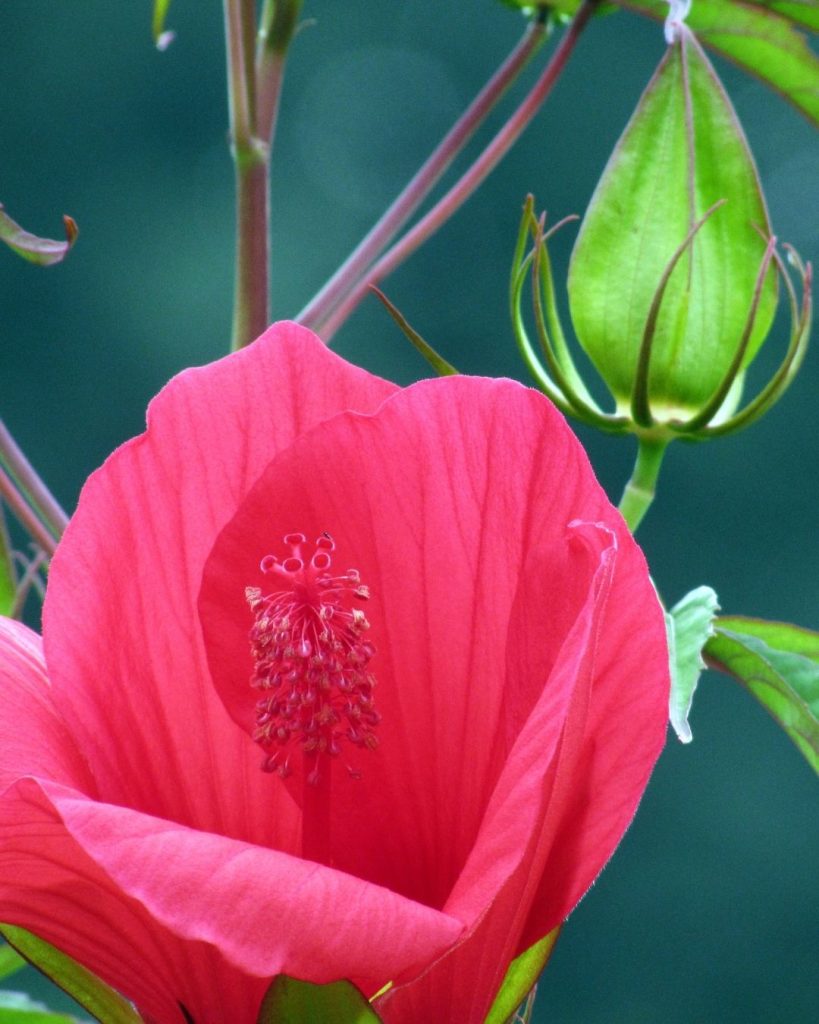
- Show-stopping red star-shaped flowers
- Loves wet feet—great for rain gardens
- Heat-tolerant and hardy to zone 6
Give this bog beauty elbow room; stalks can hit seven feet.
Pollinators go wild for the nectar, and the bold foliage adds tropical flair to pond edges or downspout swales.
Collect seeds after pods dry for easy sharing with neighbors.
15. Adam’s Needle Yucca (Yucca filamentosa)
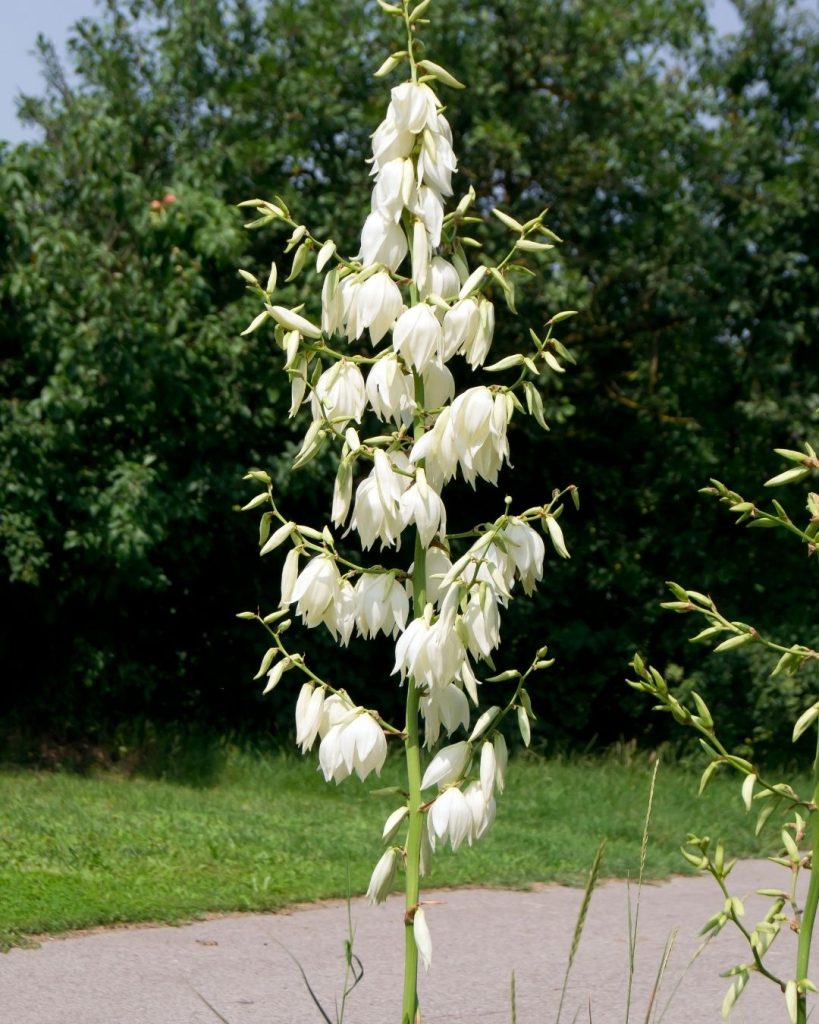
- Native evergreen rosette
- Tall spikes of creamy bells in early summer
- Zero water once established
The filament-fringed leaves add architectural drama without the needle-sharp danger of larger yuccas.
After flowering, remove stalks at the base; pups will soon appear around the mother plant for a free hedgerow.
16. Rose Verbena (Glandularia canadensis)
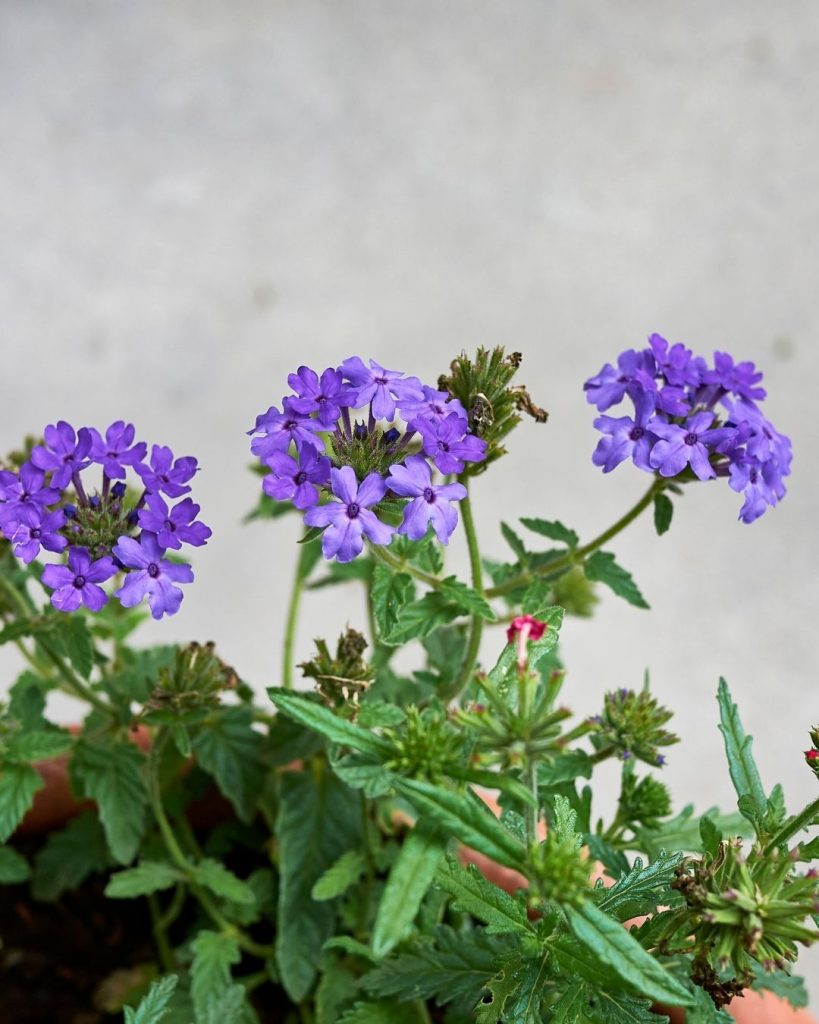
- Low mound of fragrant foliage
- Rosy-purple flowers spring to frost
- Spreads gently in sunny rock gardens
Rose Verbena prefers lean soil (too much compost equals floppy stems).
Plant at wall edges or in hellstrips where it can trail gracefully without smothering neighbors.
17. Aromatic Aster (Symphyotrichum oblongifolium)
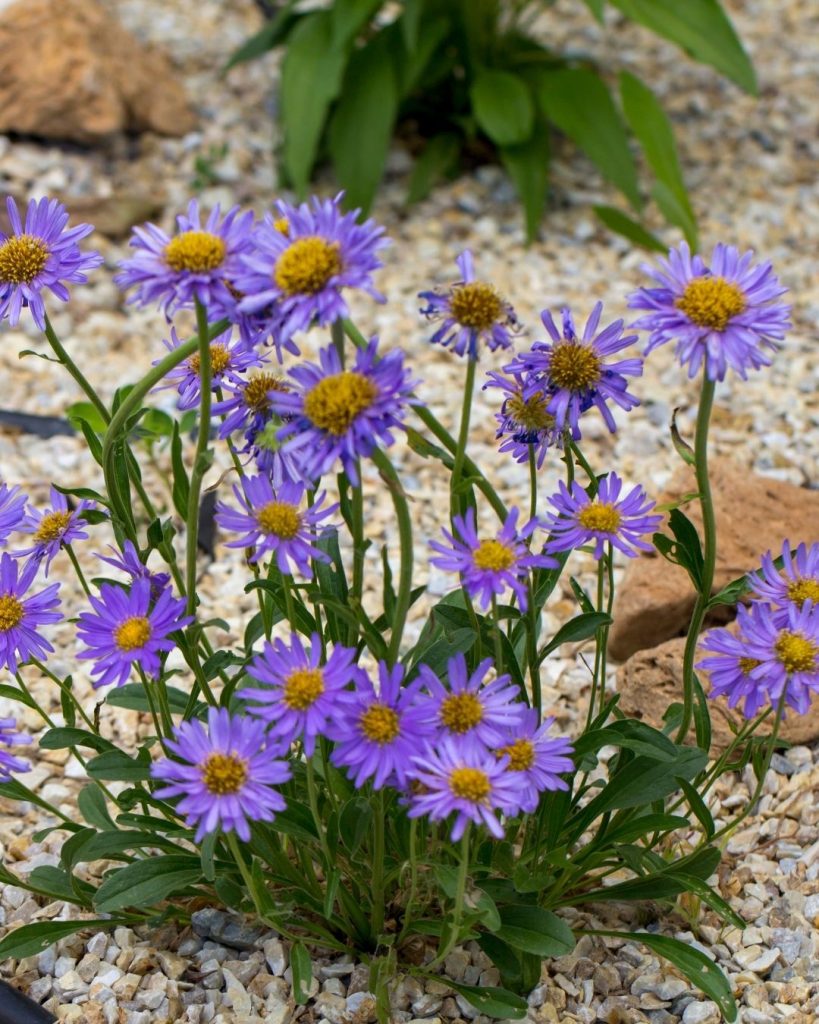
- Fragrant foliage when crushed
- Masses of violet blooms in October
- Essential late-season nectar for pollinators
Shear plants by half in mid-June to prevent flopping and double the bloom count.
Pair with ornamental grasses for a low-maintenance prairie vignette that glows when autumn sun hits.
18. American Beautyberry (Callicarpa americana)
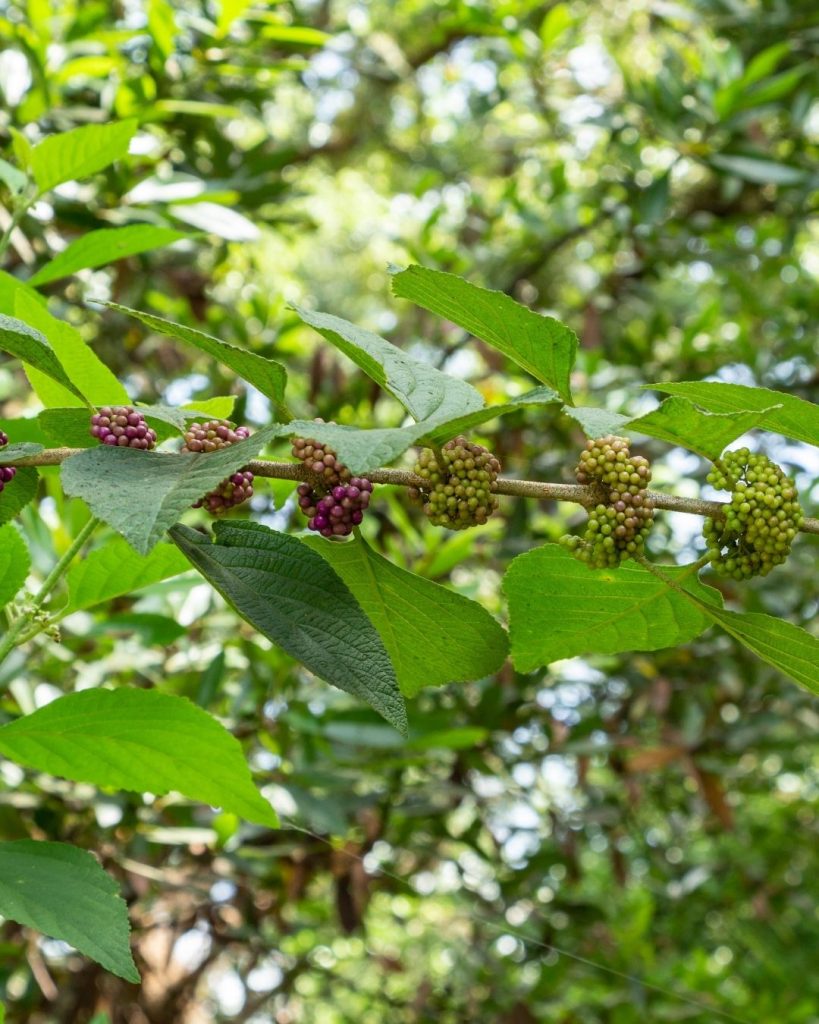
- An arching shrub for part shade
- Electric-purple berries in fall
- Berries feed birds and make eye-catching wreaths
Beautyberry blooms on new wood, so feel free to cut it nearly to the ground in late winter to keep plants compact.
The berries persist into December and create an unbeatable pop of color against muted woodland backdrops.
Thanks for reading! May your planting season be a home run!